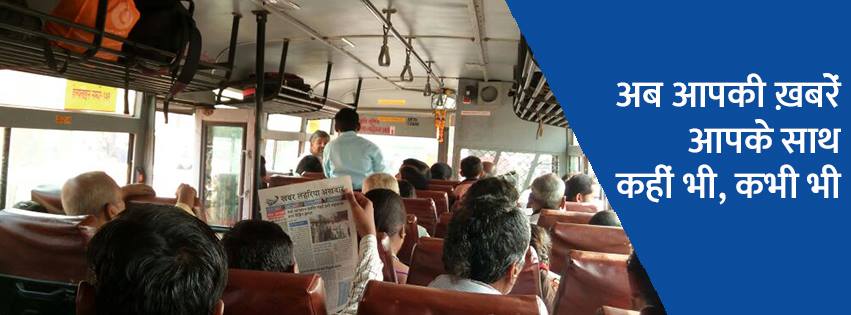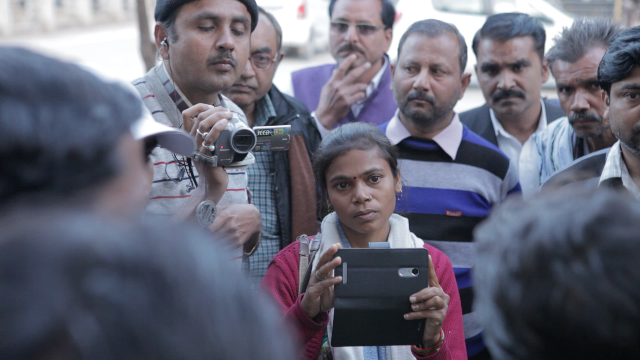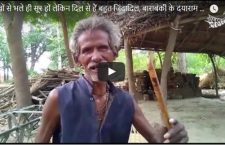In 2002, back when it all started (in a manner of speaking), Khabar Lahariya equated with print and print alone in everyone’s minds. For those of us involved in its creation and production and for our readers, print was part of our history and the written word was sacred; KL was a good old newspaper that you could hold and flip and read – one that was distributed physically by those who had helped put it together. The very reporters who had come knocking on the doors of village residents and kasbah locals asking them about their problems and issues, were now standing at the same doors, bundles of papers under their arms, in their hands. Delhi team members would camp in Karwi and the brainstorming sessions were countless as were the editorial meetings. Production would take forever, and it was preceded by heated debates around what makes something newsworthy. Debates that were at times also bizarre. (Like the time Shanti argued about giving precious real-estate print space to the story about a woman giving birth to a snake!). And the brawl that took place with Sonia over reporting about a corrupt mahila pradhaan- what stand do we take as a feminist newspaper? Of course we wrote about her!
Over a decade of our existence, we worked harder on processes – among other things – as roles and responsibilities shaped up, and organizational must-haves came into place.
As a feminist organization, we strove to report on the marginalized – minorities that have been subjugated, which continue to face oppression in the name of caste. Dalit bastis that have never seen development, not since Independence, and live on the edge of the abyss – those who are victims of pure neglect by governments that come, and governments that go. From unseasonal rainfall and olavrishti to drought; from being exposed to mining hazards and dying en route to community health centres and hospitals several kilometres away;from living in fear of dacoits, honour killings, caste-based violence and running helter-skelter to avail of one odd government scheme that almost never reaches them, BPL card or not. Entire lifetimes are spent in perpetual waiting – waiting for NREGA money, justice, an FIR to be lodged, the next government, the next elections – and for generations together who bake in a simmering rage.
And while we never ran short of those reports, we also pushed the envelope to go where no rural woman had gone before – 2014 became an important year for us as we forayed into the alpha (read regressive) male territory of political journalism. They were territorial and it was an uphill journey, but we pursued.
As a feminist organization, we headed out to report on the violence that holds rural Bundelkhand in a mighty, bone-chilling grip – violence that has its roots embedded deep in gender prejudice, deep into the very socio-cultural fabric of the landscape.We’d call it sexism, if the word didn’t pale and die a death in the face of what we see, hear, and work on every single day. Women burnt, beaten, murdered, raped, killed, because they didn’t fit the mother-wife-daughter mould cast in stone; women who perhaps dared to question or differ; and more often than not, women “punished” just for existing.
Indeed, in Bundelkhand, choosing to tell these stories, one thing is certain: We have never had to complain of the lack of news.
By the time 2015 came around, around the yearly anniversary of a country that had voted in change, swimming along with a tide that seemed to embrace (or is it engulf?) everything and everyone in its flow – some call it tsunami – we knew we needed to get on those rooftops and start screaming and shouting. We garnered recognition, even fame, won awards, and had a firm place for ourselves we’d carved out.
And so it was that in 2016, we took a gigantic leap of faith and took the big decision to go digital, opting to ride the other big wave of the internet that promises and delivers on freedom of speech. Well, more often than not, at least. We also covered the big U.P. elections in a way we had never earlier – camping ourselves amidst the hopefuls, not letting a line of questioning go. The ‘chunavi dangal’ stories were one of the most challenging days and weeks of reporting we’ve done, but it was more than worth it.
Today, our editorial meetings have transformed in many ways – some of them at scenic offsites too! We now talk about Facebook Lives and What’s App management, and optimum ways to send large-sized files.We rarely have to argue about things like celibate peacocks, though we do get embroiled in (and enraged with) the phenomenon that is Fake News – especially rampant in U.P. where most are generous with the meaning of ‘news’. We now feel self-assured enough to be able to look at mainstream media with a critical feminist perspective and comment on their style and content more often and with much greater panache than we did or felt in the past. We talk about fashion and celebrations even more now, now that culture reporting has yielded not only information and facts, but hope. And yet we also choose to remain the same. Living in a state that seems to be reeling from the same old pressures – arguably intensified with a right-wing outfit leader holding the most important position of political power – we are always of, for, by, about those who live on the edge of the abyss.
And yes, Khabar Lahariya is still a newspaper for those of us who wait for it still, to hold and flip and read.



